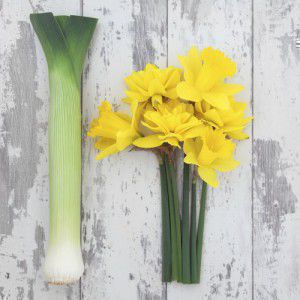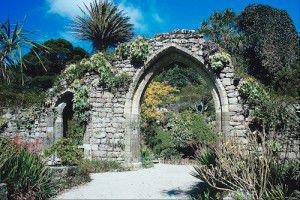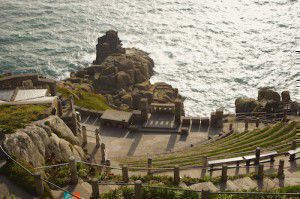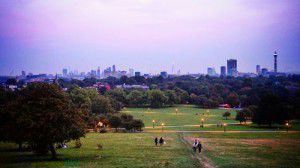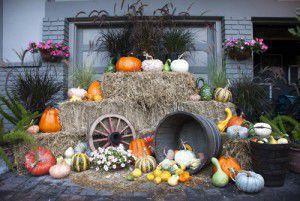5 reasons to join the Junior Language Challenge
If you’re a regular follower, you’ll have heard us talk in past years about the Junior Language Challenge, our annual competition for primary school children across the UK. This year’s challenge is now underway, and here’s why we want every child who’ll be aged 10 and under on 1st September 2015 to join in:
1. It makes languages fun
All parents and teachers know that children learn best when they’re enjoying themselves (as we all do – not just children!). So the JLC uses games and the competition element to make languages fun. We want every child who takes part in the JLC to come away from it with a new love of languages, and eager to continue with them as they move on to secondary school.
2. It introduces children to languages they’ve never heard of
Last year, children taking part in the competition learnt Italian, Japanese and Somali. This year, they’ll be starting with Portuguese. We like to offer exciting, different languages – because once a child knows they can learn Chichewa, suddenly French and Spanish won’t seem so daunting. And it encourages them to learn about other cultures and countries, some of which they may never have heard of before.
3. It doesn’t take up loads of teacher or parent time
We know teachers and parents are busy people. That’s why the JLC is designed to be as easy as possible to set up. We’ve even created this letter to parents, which explains what it’s all about. Everything’s done online, so once you’ve got them registered, children can login on any computer and keep learning. Our system records all the scores, so the only thing we need from the grown-ups once they’re up and running is encouragement!
4. It’s for charity
The JLC doesn’t just benefit the children who take part; it also raises money for our charity, onebillion. They’re doing fantastic work creating apps to transform the education of one billion children in developing countries, and we’re proud to support them. Each child who enters the competition pays a £5 entry fee, all of which is donated to the organisation.
5. There are some great prizes on offer
The JLC champion wins a once-in-a-lifetime family holiday to Africa (our 2013 winner, Ella, wrote us this fantastic report about her trip to Malawi). There are also prizes for the runners-up – in previous years these have included iPods and cameras – and goodie bags for everyone who makes it through to round 2 and beyond, including t-shirts, pens, and other treats, as well as discounts on EuroTalk software for the children and their schools.
Registration is open now for school groups and individuals. Teachers can register their school for free, to take a look and try out the games before deciding whether to sign up any pupils.
If you’d like more details about the Junior Language Challenge, or to join in, visit the website or email us.
And if you know anyone else who might be interested, please spread the word!
Good luck to everyone taking part this year. Or should we say Boa sorte 🙂
Language of the week: Welsh
Did you know that Welsh is now one of the 111 languages available to learn with uTalk? And as it was Saint David’s Day yesterday, we’ve chosen Welsh as our language of the week.
1st March each year is when the Welsh celebrate the patron Saint of Wales, who died on that day in or around 569 AD. People all around the globe mark the day by wearing the national emblems, either a leek or a daffodil, and there are parades and various music and cultural events to celebrate the holiday.
St David was buried in the Cathedral of St David’s in Pembrokeshire, which has now become a popular place of pilgrimage.
Here are some fun facts and figures about the Welsh language and Wales (Cymru):
- Arsenal footballer Aaron Ramsay, and singers Connie Fisher, Rhydian Roberts, Cerys Mathews and Duffy all speak Welsh, as do actors Ioan Gruffudd and Matthew Rhys.
- The Welsh alphabet does not include the letters J, K, V, X and Y.
- The Welsh Motto is: ‘Cymru am byth’ (pronounced come-ree am-bith), which means Wales for ever, or long live Wales.
- 21% of the population in Wales speak Welsh, and 20% of primary school children are taught in Welsh.
- The village of Llanfairpwllgwyngyllgogerychwyrndrobwllllantysiliogogogoch is in the Guinness Book of Records for having the longest place name in Britain. Anyone want to have a go at pronouncing it?!
- The national animal of Wales is the Dragon, which appears on the country’s flag.
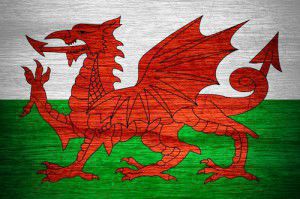
- Welsh is a Celtic language and was one of the earliest written languages in Europe.
- Since 1865, there’s been a Welsh colony in Patagonia, Argentina. The people there speak Patagonian Welsh, which is different to the Welsh spoken in Wales. This year is the colony’s 150th anniversary.
- Wales is said to contain more castles per square mile than any other country in the world.
- A traditional dish in Wales is laverbread, which is made from seaweed (have you ever tried it?)
Did you celebrate St David’s Day yesterday? Tell us about it in the comments!
10 reasons to visit… Cornwall
With St Piran’s Day approaching fast, what better time for a blog post on why to visit lovely Cornwall? Despite the occasionally severe weather and lack of phone signal, everyone who’s ever been to Cornwall seems to love it, and here (in my opinion) is why:
1. The Isles of Scilly
Situated 30-odd miles off the mainland, this archipelago boasts its own microclimate of tropical plants and pearl-white beaches. A network of ferries connect the inhabited (and some of the uninhabited) islands, making daily dashes across the turquoise waters. If you’re there for a week, it’s worth taking a new ferry trip each day, as all the islands have quite different scenery, but if you’re just on a day trip from the mainland you might want to join the crowds in the Tresco Abbey Gardens, a stunningly maintained collection of exotic plants in a vibrant setting. Don’t forget to meander down to the corner of the Gardens know as ‘Valhalla’, where you will find a graveyard of figureheads salvaged from Scilly wrecks.
2. Pasties
I just said that to get your attention: although the Cornish Pasty is definitely a wonderful creation, and a very famous Cornish export, it’s by no means the only food on offer. Try to sample some other local delicacies during your trip, such as saffron cake, clotted cream (preferably in the form of a cream tea), Yarg cheese, mead wine, local beers, hevva cake, crab sandwiches, fudge, fairings, and lots of freshly caught fish.
3. Bodmin Moor
Contrasting with the fabulous white beaches are the wild moors which inspired Daphne Du Maurier’s ‘Jamaica Inn’. Great yellow, gnarled expanses dotted with abandoned engine houses and mining debris, the moors are also home to a huge range of archaeological treasures from the Neolithic, Bronze and Iron Age. You almost can’t turn around in Cornwall without stumbling over a barrow, hill fort, stone circle, cist or coit – an archaeologist’s heaven.
4. St Ives
You can’t really visit Cornwall without visiting St Ives, and if you go to St Ives you’ll understand what it was that inspired such great artists as Barbara Hepworth, Peter Lanyon, Bernard Leach and Alfred Wallis, as well as writers like Virginia Woolf (whose famous Lighthouse lies a stone’s throw away from the town). St Ives has the perfect combination of azure sea, white sand and tiny pastel-coloured cottages crammed together along crooked lanes. Nowadays, it is home to the Tate Modern, stunningly housed in the old gasworks, as well as to numerous private galleries and the hidden gem that is Barbara Hepworth’s walled sculpture garden.
5. Festivals
Cornwall loves an excuse to celebrate, and there are plenty of local and international festivals celebrating music, food and – of course – boats. For May Day, go to Padstow for Obby Oss Day, where the town splits into two (the red and the blue) and each side dances through the street after a wooden horse (the Oss), welcoming the spring with their May song. For New Year, dress up in your finest fancy dress and spend the evening dancing through the streets in the world famous St Ives (or the slightly less famous, but no less fun, Looe). And in June spend a day or two at the Sea Shanty Festival in Falmouth, trailing from one pub to the next and hearing a different shanty group (some coming from as far away as Brittany) in each one.
6. Fishing, sailing and surfing
Whether you’re a pro or an amateur, there’s great surf to be had in Cornwall and plenty of surf schools to help you along. Sailing and fishing trips are also readily available (ever wanted to try shark fishing?) and plenty of local pubs and restaurants serve the catch of the day. Gig racing is another popular sport in Cornwall, with lost of coastal villages having their own club and the World Pilot Gig Championships taking place on the Isles of Scilly in May each year.
7. Minack theatre
Visible from the sea, the Minack amphitheatre is open from May to September each year, staging plays against the stunning backdrop of cliffs and ocean. You’ll find yourself directed to a seat carved into the cliff (bring a cushion and some rugs for warmth) from which you look down on the stage at the very edge of the cliff – walk the Coast Path around here and you’ll see the tiny, rickety cliff path the actors use when they go backstage. Although atrocious weather can lead to a play being called off, in general the natural elements add a special dramatic effect to the performance, so if you ever get a chance to see The Tempest there on a stormy night, go!
8. South West Coast Path
Whether you have a few weeks spare to complete the whole trail around the Cornish coast, or just a few hours to do one of the shorter walks, it’s worth factoring a coastal walk into your trip. The coastline changes dramatically all around Cornwall, from the barren scrub of Land’s End to the high cliffs of Bude, to the pretty fishing villages of Coverack and Cadgwith. There are plenty of campsites and inns to stay in along the way, as well as endless beaches to go for a paddle and bathe your sore feet.
9. The Mousehole Lights
Each year over Christmas and New Year, the tiny fishing village of Mousehole decks itself out in the most impressive light display. Go there of an evening and wander around the miniature streets, spying giant Christmas puddings, Loch Ness Monsters, whales, bells, candles and silhouetted ships spreading from the harbour all the way up the hill. Mulled wine and apple juice are available in the streets, and most of the art galleries and shops stay open late for last-minute Christmas shopping.
10. Feeling that you’re somewhere a little bit different
Cross the border and you’ll start to get that pleasant feeling of being in a slightly foreign land. Cornwall has a very strong sense of identity and it’s very proud of its culture, as you’ll notice from the enormous number of Cornish flags flying in place of the St George’s Cross. Although you might not be lucky enough to hear anyone speaking Cornish (speakers are still a rarity, although it’s not hard to find a Cornish language class if you want to), a little smattering of words won’t go amiss if you want to figure out some of the place names. For example, anywhere beginning ‘Tre’ (which is basically everywhere in Cornwall) is going to be a village and anywhere with ‘porth’ in it is likely to have a harbour. If you want to learn a few more Cornish phrases, get our uTalk Classic Cornish. Or you can try a few words for free on our website.
Nat
10 reasons to visit… London
I’m really excited about this one, London is my absolute favourite city and not only because it has been my lovely home for more than a year but because it’s truly one of the best places in the world.
Here are 10 reasons you should choose London as your next destination for a city break or a longer vacation.
1. The people and the vibe
I’ve put these two reasons together because I think they are related to one another. The first thing that made me have the warmest feelings for this great city is the kindness and friendliness of the people. When I first came here I thought it is very endearing that people here say ‘thank you’, ‘sorry’, ‘I apologise’ as often as they can, and that matters more than you’d think when you are in a city with 8 million other people.
I promised I’d be specific so let’s get down to actual locations of things to see in London. Now, I won’t bore you with Big Ben and the London Eye… If you’ve never been here before, I suggest reserving a day just for the Central London attractions so you can tick them off your list, ’cause, you know, #BigBenSelfie.
2. Richmond
When you get there you’ll be in a different world. Richmond Park, the largest of the capital’s eight Royal Parks and the biggest enclosed space in London, is home to the beautiful Isabella Plantation, Pembroke Lodge and herds of Red and Fallow deer.
The city centre is very beautiful as well – take a walk near the river, the bridge and on the high street. If you are lucky to be there on a sunny day, have a look at the local farmers market, the lovely boat restaurants and terraces along the river.
3. Holland Park & Kyoto Garden
Holland Park is a district and a public park in the Royal Borough of Kensington and Chelsea, in central London. It has a reputation as an affluent and fashionable area, known for attractive large Victorian townhouses, and high-class shopping and restaurants. The park itself is very beautiful and quiet, with squirrels and peacocks walking around. Inside the park you can find the Kyoto Garden, which is a Japanese garden and can be described as an oasis of tranquility, where you can relax and watch the waterfalls and the rather large orange fish swimming in the pond.
4. Kensington Palace and Hyde Park
These two locations are close together so I reckon this would be the perfect place for spending a lovely relaxed day starting with brunch in one of Notting Hill Gate’s posh cafés and continuing with a walk to Kensington Palace and its amazingly beautiful gardens (no really, the Brits have a special talent when it comes to ridiculously good looking gardens). Passing this, you will find yourself in the biggest park in central London, Hyde Park.
5. Notting Hill Gate and Portobello market
Head to the famous Portobello Road Market for everything from antiques and vintage accessories to street food and fresh veg stalls. If you like walking around aimlessly in an unfamiliar area, I definitely recommend a walk on the streets of Notting Hill, to discover nice boutiques, cafés, restaurants and colourful houses. If you are there on the Sunday and Monday of the last weekend in August you can even take part in the famous carnival that takes place there.
6. Camden Town and Regent’s Park
Camden is renowned for its markets that date from even the 1970s, some of them. It used to be just a small food market serving the local community, but by 2013 all the foodstuff and produce stalls had gone, leaving only touristy stalls. In the vicinity there is the lovely Primrose Hill (also nice cafés in the area), where you can get a beautiful view of the city while sitting on the grass. Going south from there, you will reach Regent’s Park.
7. Theatreland
You can’t come to London and not check out a West End show. From the classic shows like Les Misérables and Phantom of the Opera, to new hits like The Curious Incident of the Dog in the Night-time, there’s something for everyone. It’s not cheap, but it’s the kind of thing you have to experience at least once in your life. Or if Shakespeare’s more your thing, and you’re in London between April and September, visit the Globe for an open-air performance (only £5 for a standing spot in the yard), and hope it doesn’t rain…
8. Greenwich
Notable for its maritime history and for giving its name to the Greenwich Meridian (0° longitude) and Greenwich Mean Time. It is located in South East London and is the home of the National Maritime Museum and University of Greenwich, which has very nice architecture and gardens that go till the Thames bank, and the chance of seeing a great sunset over the river are pretty high. If you feel active, take a walk into the Greenwich Park and go up the hill to get to the Royal Observatory where, besides the renowned Prime Meridian, you get to see a beautiful view over the city skyline.
9. Covent Garden Market
This is a great place especially around winter holidays. It is a covered market, very nicely decorated, with shops, cafés and restaurants. Almost always you’ll see street performers doing their act, some of which have proved to be quite impressive. During winter time you can get mulled wine and other hot drinks and food; during summer you can chill with a glass of wine or pint of beer at one of the outdoor terraces.
10. Thames South Bank
On a day with pleasant weather, take a walk on the river’s south bank, starting from the London Eye (Waterloo) and continuing along the river. There is a beautiful view of the buildings in The City, ships on the river, cafés and terraces. You will pass the Millennium Bridge that leads to St. Paul’s Cathedral, Tate Modern museum, London Bridge (you can stop for a snack or a meal at the Borough Market behind Southwark Cathedral), London Bridge City Pier (great spot for photos with the city in the background), London City Hall and finally get to the wonderful Tower Bridge which has recently opened an exhibition for its glass floor in the upper side of the bridge (the bit between the towers). This is a great experience, as you can see from the photo below.
Before you come to London, don’t forget to install uTalk so you can properly order fish and chips and a pint of beer, or nonchalantly refer to the underground as ‘the tube’.
Ioana
Halloween around the world
Halloween is one of the world’s oldest celebrations, dating back to possibly 500 AD in Ireland. The celebration was originally the ‘Celtic feast of Samhain’, a pre-Christian festival that began at sunset on 31st October and ended at sunset on 1st November. It was meant to be the night when the veil between this world and the other was at its thinnest, and the dead were very near.
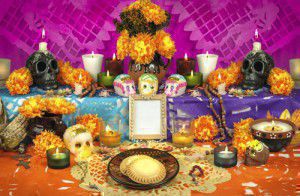 Today Halloween is celebrated in a number of countries across the world. In Mexico and other Latin America countries, Día de los Muertos (the Day of the Dead) honours deceased loved ones and ancestors. The festival runs from midnight on 31st October until 2nd November. Traditionally 1st November is the day for honouring children that have passed, whereas 2nd November is the day for honouring the adult spirits. Families traditionally construct an altar for the dead and decorate it in sweets, flowers, photographs and the deceased’s favourite food and drink. Often a washbasin is left outside with a towel so the spirit can wash before indulging in the feast. Many people around the world, even if they are not directly connected to Mexican culture, are drawn to the concept and imagery of Mexico’s Day of the Dead, so it is continually growing in popularity.
Today Halloween is celebrated in a number of countries across the world. In Mexico and other Latin America countries, Día de los Muertos (the Day of the Dead) honours deceased loved ones and ancestors. The festival runs from midnight on 31st October until 2nd November. Traditionally 1st November is the day for honouring children that have passed, whereas 2nd November is the day for honouring the adult spirits. Families traditionally construct an altar for the dead and decorate it in sweets, flowers, photographs and the deceased’s favourite food and drink. Often a washbasin is left outside with a towel so the spirit can wash before indulging in the feast. Many people around the world, even if they are not directly connected to Mexican culture, are drawn to the concept and imagery of Mexico’s Day of the Dead, so it is continually growing in popularity.
Halloween in the Philippines is called Pangangaluluwà, which is sadly a tradition that is dying out. They have a slightly different version of trick or treating, where children go from door to door and offer a song in exchange for food or money. However, it’s not just any food they are offered; it is a kind of Filipino version of a soul cake, as they believe that every cake eaten is a soul set free in purgatory. The carollers would also be allowed to steal sundry items from the houses that they visit, such as clothes from a clothesline, eggs, vegetable and fruit. The homeowners would explain the thefts by saying it was the ‘spirits returning to the world of the living’.
It wasn’t until the 19th Century that Halloween reached America, and they do things slightly differently to us Brits. ‘Across the Pond’, Halloween marks the beginning of ‘fall’ (autumn). For families it is a time to prepare and create costumes together, compared to Brits, who normally buy pre-made outfits. In the U.S., they also have a slight twist on what to do with the ‘pumpkin guts’ after carving their jack o’lanterns; instead of throwing them away, they roast the remains with salt and cinnamon (I have to say I am very tempted to try this). When it comes to decorating their houses they also take it one step further than our pumpkin outside of your door. (I wish this were the case over here).
Here at EuroTalk we are all dressed up for the big day, from the scary (Frankenstein, skeletons and a bat) to the not so scary (Minnie Mouse, Where’s Wally – or Waldo to our American friends – and a giant baby). And of course, there’s cake. (That’s not necessarily traditional for Halloween in the UK – we just love cake.)
Happy Halloween!
Amy





